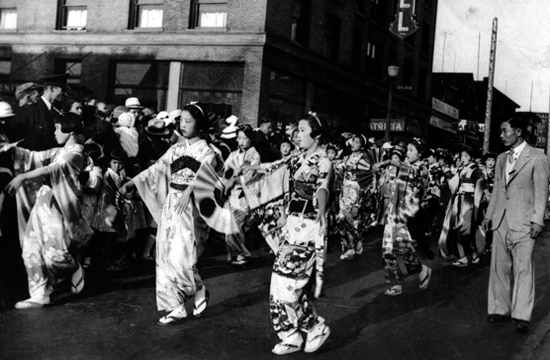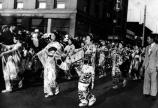New findings sharpen view on Vancouver properties in 1940s
Humanities, Social Sciences, Law
- Tara Sharpe

The role played by the City of Vancouver in the dispossession of Japanese Canadians during the 1940s is now more clearly drawn, thanks to exhaustive work over the past two years by one of the biggest research projects in the field of humanities in Canada.
A team of researchers within Landscapes of Injustice—the federally funded, seven-year, multi-partner research project launched in 2014 and led by UVic—uncovered a historical trail in municipal and federal archives about an overlooked urban history. The findings of the Landscapes of Injustice Research Collective, forthcoming in an article entitled Suspect Properties: The Vancouver Origins of the Forced Sale of Japanese-Canadian-owned Property, WWII, generated advance media coverage in Vancouver in January 2016 and will appear later this spring in the peer-reviewed Journal of Planning History.
The history of uprooting and internment of 22,000 Japanese Canadians in coastal BC during the war has received scholarly and popular attention over the years, but the story of dispossession is not at all as well known. The project team led by associate history professor Jordan Stanger-Ross wants people to understand exactly how much this history still matters.
“We risk overlooking the most important lessons of our past if we do not hold deep conversations about the legacies of twentieth-century racism,” Stanger-Ross pointed out at the time of the project’s launch.
In the spring of 1942, Japanese Canadians were uprooted from their homes by the federal government. One year later, despite assurances to the contrary, the Government of Canada resolved to sell all of their property—homes, businesses, farms, personal effects—without their consent. The material losses of Japanese Canadians during the decade would, in today’s currency, amount to at least one billion dollars.
The first four years of Landscapes of Injustice involves a research and documentation phase and is focusing on four locations—Steveston; Maple Rid#8805; Salt Spring Isl#8743; and Powell Street in Vancouver.
Suspect Properties shows clearly that town planners involved with aspirations to improve low-income housing in Vancouver initially thought they could take advantage of the uprooting of Japanese Canadians to redevelop the East End, specifically the Powell Street area where Japanese Canadians had concentrated, replacing older and sometimes deteriorating properties with modern housing. The city sent in inspectors in a campaign to condemn the existing rental housing owned by Japanese Canadians, rather than preserve and protect it.
The city’s intention was to convince federal officials the buildings in the neighbourhood were uninhabitable. Federal officials seized on the notion that the properties were substandard, but abandoned the redevelopment project, deciding simply to sell everything that Japanese Canadians owned. “The misguided notion that all Japanese-Canadian-owned property constituted a ‘slum’ was twisted into additional justification for the forced sales,” explains Stanger-Ross, a co-author of this new study.
Project member Vivian Rygenstad, chair of the Landscapes of Injustice Community Council (an arms-length committee comprised of established and emerging leaders in the community), spoke earlier this year with CBC Vancouver about her own family’s history. Her parents were forcibly uprooted but not before hiding valuables like cameras in the walls of their home “because the government had assured them they’d be coming back.
“These stories need to be taught. They need to be learned. It’s Canadian history and we learn from our history.”
In 2013, Vancouver council formally apologized for the internment motion passed on Feb. 16, 1942.
“Does apology mean that the door is closed on this history, whatever researchers may find?” Stanger-Ross asks. “This new evidence merits a discussion between city officials and Japanese Canadian community members, including the members of our project’s community council.” While it is outside the purview of the scholarly team to negotiate further with the city, the Landscapes of Injustice Community Council is discussing next steps.
The documents analyzed by the collective included internal memos, minutes of council and town planning commission meetings, and minutes of meetings of federal cabinet ministers.
Landscapes of Injustice is funded by a $2.5 million partnership grant from the Social Sciences and Humanities Research Council with additional funding from the partnership of 13 institutions—universities, museums, and Japanese-Canadian community organizations—and the project has also brought together researchers in three faculties at UVic: Humanities, Law and Social Sciences. The project’s head office is part of the Centre for Asia-Pacific Initiatives at UVic.
It will culminate in a cross-country tour of a new interactive museum exhibition.
www.landscapesofinjustice.com
@LandscapesInjus (#1942dispossession)
facebook.com/Landscapes-of-Injustice




